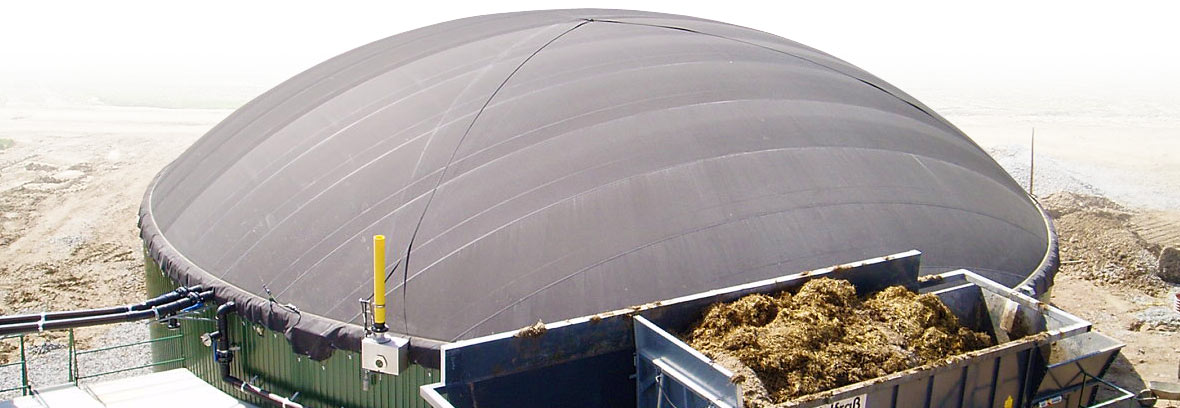Biogas plants
The production of biogas has great advantages for us. We can afford to feed the animals with he best feed and worse quality of feed is used in biogas plants. We use organic matter to produce electricity, heat and organomineral fertilizer. In addition to organic carbon, most nutrients are returned to the field. We run two biogas plants, one in Lesonice and one in Krahulov.
How a biogas plant works
Input raw materials
-
Silage
Silage is one of the basic bulk feed. We process corn and rye silage.
More about silageThanks to rye we are able to grow bulky feed on dry and sandy lands. It also fits very well into our cultivation process. As for corn silage, energy production consumes less good feed, and animals receive only the best one.
-
Dung and manure slurry
Dung and manure slurry contain bacteria from the digestive tract of animals and plenty of minerals. Their processing at the biogas station greatly stabilizes the fermentation process in fermenters.
More about dung and manure slurryAnother advantage is that after the biogas plant passes, the smell of the resulting fertilizer is greatly reduced, and so we do not bother to surround the application.
-
Residual side products
The biogas plant also efficiently processes secondary, unusable food products such as residual raw materials from sugar or citric acid production.
More about residual productsThe more our biogas plant is “fed” with these materials, the less our biogas plant consumes raw materials grown on land. Reducing the need to use arable land for biogas production, of course, we see as economical.

Biogas plant
The feedstock is mixed and crushed until an organic "slurry" is formed. It is placed in a fermenter where it is stirred and heated to 42°C. At this temperature, anaerobic bacteria is helped to decompose the organic matter without the air and release the resulting gas. The gas is burnt in a generator and electricity is produced.
Output products
-
Digestate
Digestate is a remaining material ofter the feed has been fermented. It is a good liquid organomineral fertilizer with an interesting ratio of essential nutrients.
More about digestateThe digestate does not smell and when it is applied, the environment is not bothered by the odour, as in case of slurry or manure. We use a large part of the digestate for maize fertilization, where it covers a substantial part of the nutrients. Another important application is manuring before winter crops sowing, along with the introduction of straw into the soil. This combination is especially effective because digestate supplies the soil with nitrogen and straw supplies the soil with organic carbon. Both together support life in the soil and ensure its optimal nutrition.
-
Electricity
Electricity is the main product of a biogas plant. It is produced by burning biogas in a cogeneration unit.
More about electricityPart of the produced energy is consumed for the needs of our farm, mainly for the operation of cows and milking parlors in Lesonice. An even bigger share of our own electricity will be used in the production of compound feed in the Krahulov plant. We then sell the surplus to the distribution grid.
-
Steam / Heat
The by-product in the production of electricity is heat in the form of hot water or steam. The steam is only produced in the biogas plant in Krahulov.
More about steam / heatThe stem boiler supply water is first pre-heated with warm water and then is is heated it to the steam with the combustion gases from the cogeneration unit. It is used in the production of hydrothermally processed commodities or for the granulation of compound feed. Excessive heat is the source of heating of other objects during the winter. Regarding the use of heat, Krahulov biogas plant is one of the most efficient ones. In Lesonice we use heat for domestic water and building heating.
Contact our biogas plant specialist
-
 Filip Daňhel
Filip Daňhel - +420 727 891 125
- Contact form
Contact form
Consent to the personal data processing
The applicant provides a consent to processing of their personal data in the scope of the biographical data provided by the applicant in the submitted CV at www.adw.cz and its storage in order to establish a contact and possible business cooperation with companies within the ADW Group. .
